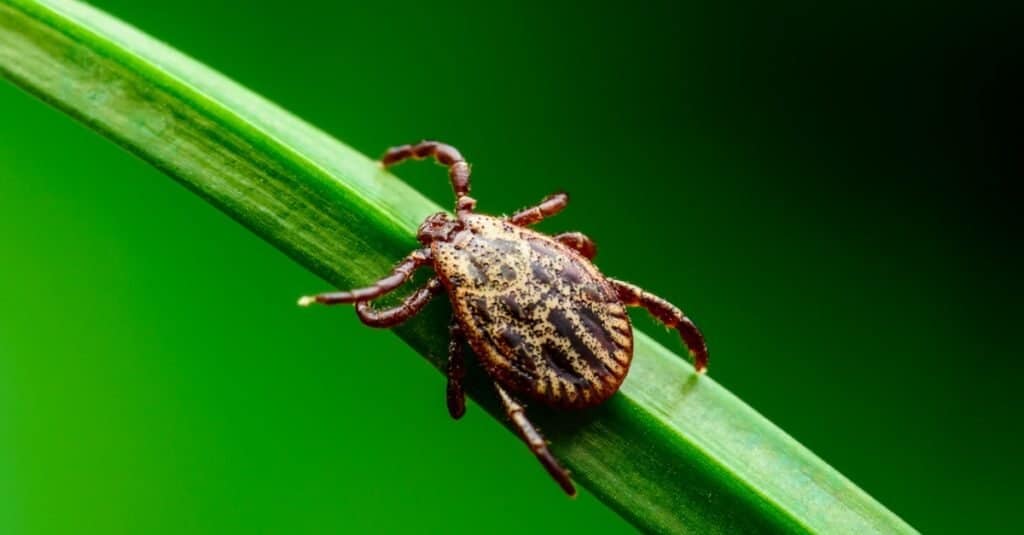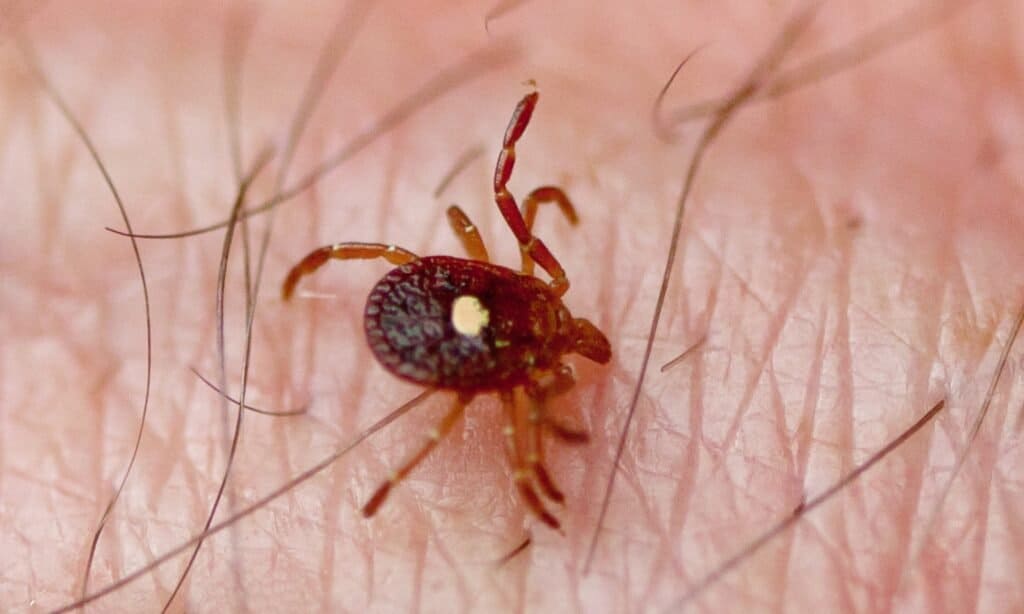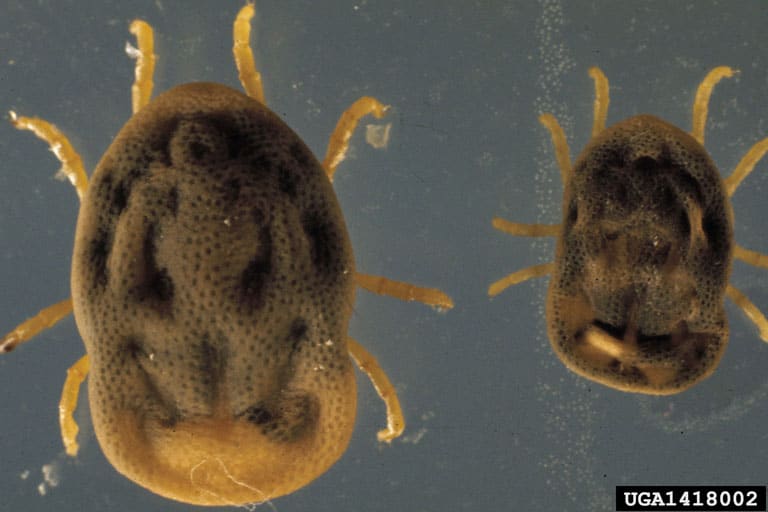Ticks in Kansas are just a fact of life. Like mosquitoes, they prey on humans, dogs, and warmblooded animals of every size and type. Ticks live in every single one of the fifty states, as well as nearly every continent on Earth (the sole exception being Antarctica). They are vectors for some pretty serious diseases, and bacterial infections, including Lyme disease and Rocky Mountain spotted fever.
Ticks feed off very few victims in their lifetime. Most of the ticks found in the United States are called ‘three host’ ticks, meaning they take only three hosts over the course of their lives. Each tick is born from an egg, takes a host as a larva, takes another host as a nymph, and finally, takes a host as an adult. Then, if the tick is female, she lays eggs and dies.
Ticks may have a dismal life, but those unlucky enough to catch Lyme disease from them may have even worse prospects. So, if you’re planning on any outdoor activities in Kansas, it’s important to know your ticks. Here, we’ll learn about the four types of ticks found in Kansas and how to avoid them. We’ll cover where they live, when they come out, and which species spread Lyme disease.
Let’s take a look at the four most common ticks in Kansas.
1. American Dog Tick

Wood ticks are also known as American dog ticks.
©iStock.com/nechaev-kon
American dog ticks (Dermacentor variabilis) are one of the most common ticks in Kansas. Females have dark brown bodies with white shields just behind their heads. Males have mottled tan bodies with dark brown markings. Both the male and female American dog tick are capable of biting both humans and dogs. They’re alternatively known as wood ticks and live throughout the entire eastern United States and along the Pacific coast as far north as Alaska.
2. Lone Star Tick

The ‘lone star’ marking on the female’s back gives the lone star ticks their name.
©iStock.com/epantha
Lone star ticks (Amblyomma americanum) are common throughout the United States and Mexico. Unlike other species of ticks in Kansas, these ticks feed on all creatures, from the smallest mouse to humans, deer, or dogs. Male lone star ticks feed off many different hosts as adults, taking smaller blood meals from each. Meanwhile, female lone star ticks take one very large feeding from a single individual, then lay up to 5,000 eggs before dying.
3. Deer Tick

Female deer ticks stay attached to their hosts for up to five days,
©KPixMining/Shutterstock.com
Deer ticks (Ixodes scapularis) are commonly known as black-legged ticks. They’re one of the most common ticks in Kansas and live throughout forests and shrublands. They have dark brown bodies and black legs (hence their name) when unfed. But, after feeding, their bodies swell to many times their normal size and turn light gray. Deer ticks primarily feed on white-tailed deer but will also attach to any human who treads too close.
4. Spinose Ear Tick

The spinose ear tick is the only soft-bodied tick in Kansas.
©Mat Pound-USDA Agricultural Research Service Country-United States / Creative Commons – License
Spinose ear ticks (Octobius megnini) primarily feed off on cattle, attaching to the thin skin of their ears. Unlike other species of ticks that feed during every stage of life, the spinose ear tick only takes blood from hosts during its larval and nymph stages. Spinose ear ticks live all over the world and can even be found in Hawaii. Though their primary hosts are quadrupeds like cattle, goats, and sheep, they also occasionally attach to dogs or cats. Occasionally, large numbers of these ticks attached to the ear can cause infections or attract maggots.
When is Tick Season in Kansas?
As in most places, the time for ticks in Kansas is the warm summer months between March and September. Ticks rely on the cycle of the seasons to breed, lay eggs, and feed. Most hatch in early spring and feed on small creatures like mice and rats. By the time summer is in full swing, the adult ticks are ready to attach themselves to humans.
Do Ticks in Kansas have Lyme Disease?
When watching out for ticks in Kansas, one of the biggest concerns is the bacterial infection known as Lyme disease. Only one tick in Kansas carries this disease, the deer tick. Deer ticks can carry the Lyme disease bacteria in their saliva. When they bite a human, they transfer bacteria into the host’s bloodstream, thereby passing on Lyme disease. Ticks themselves can’t get Lyme disease; they can only carry it, which is why they’re known as disease vectors.
Where do Ticks Live in Kansas?
Ticks in Kansas are most plentiful in wooded areas and the liminal zones between woods and open fields. If you want to find a tick, go digging around in the leaf litter on the forest floor. Or, you could wade through fields and shrublands, allowing the foliage to touch your clothing or body. Either way, you’re sure to find at least one tick.
How to Avoid Ticks in Kansas
Ticks in Kansas can be avoided using several tried and true methods. Wear long pants and long sleeves to deter bites. Check yourself and your clothing for ticks after any outdoor activity. Be mindful of where ticks live and try to avoid areas with a high probability of having ticks.
The photo featured at the top of this post is © Steven Ellingson/Shutterstock.com
Thank you for reading! Have some feedback for us? Contact the AZ Animals editorial team.






